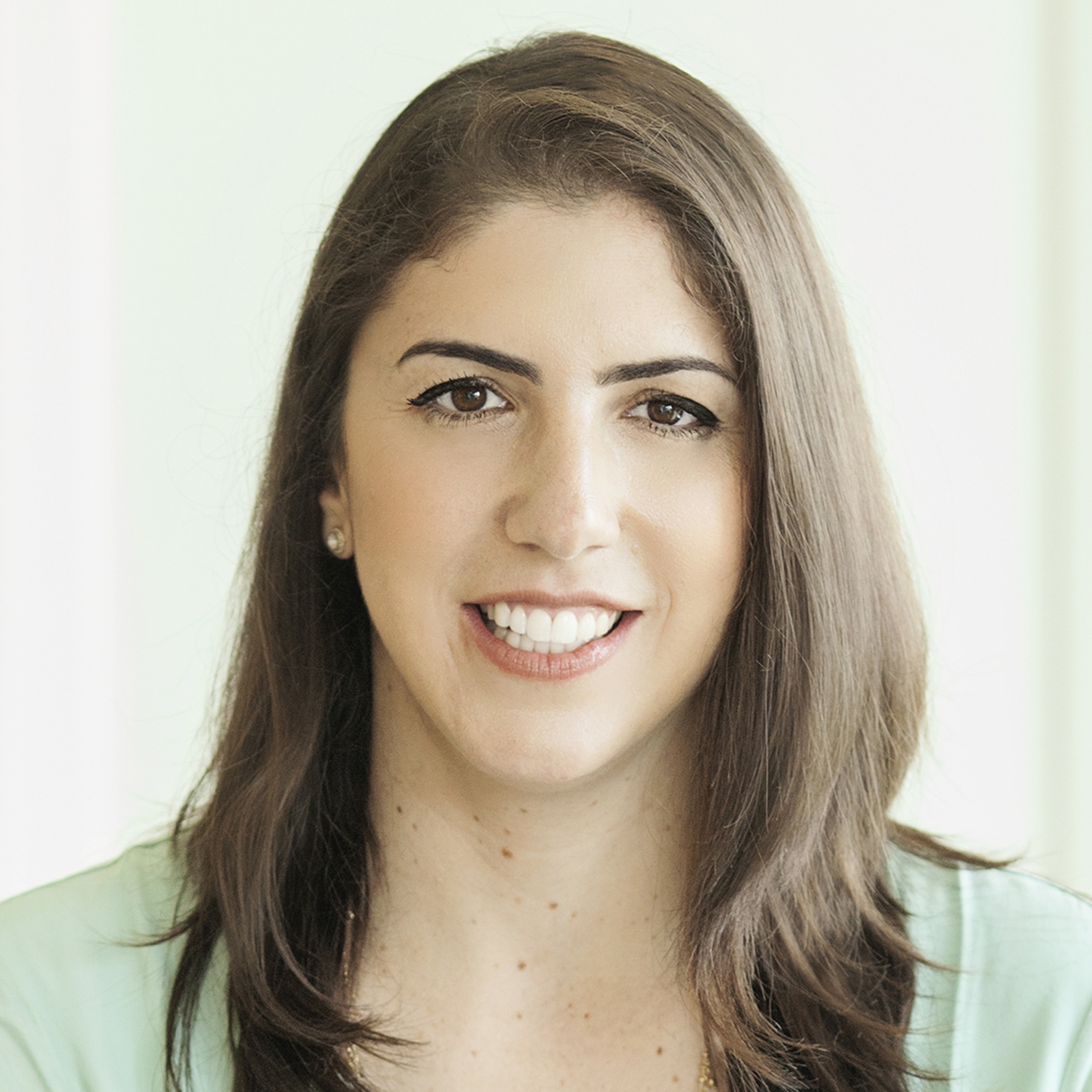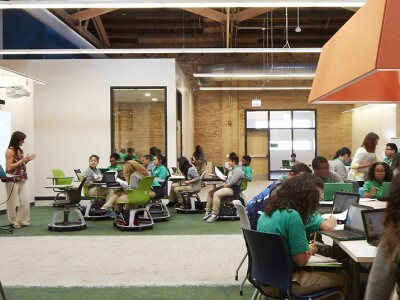A Trip to Cesar Chávez School in Back-of-the-Yards Chicago
Topics
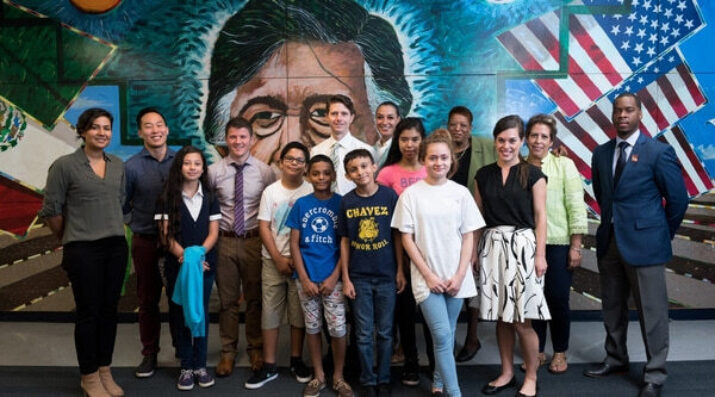
We’ve all had the experience of truly purposeful, authentic learning and know how valuable it is. Educators are taking the best of what we know about learning, student support, effective instruction, and interpersonal skill-building to completely reimagine schools so that students experience that kind of purposeful learning all day, every day.
Practitioner's Guide to Next Gen Learning
I recently visited Chávez with a group of teachers from Washington, D.C. who are part of the CityBridge Foundation’s Teacher Innovation Fellowship.
Next Gen Learning is Happening Here!
Principal Barton Dassinger begins each day by updating the master Excel spreadsheet he keeps on his students. At the Cesar E. Chávez Multicultural Academic Center in Chicago’s infamous “Back-of-the-Yards” neighborhood, student mobility is so high that Dassinger often has to correct his enrollment figures on a daily basis. He then goes through each column and makes sure all of the data from the various learning software programs his teachers use has been accurately uploaded into the master file. (He used to upload the data files by hand but Dassinger has worked tirelessly with software companies to make sure the data files are interoperable with one another and with his master learning management system). Once he is confident in his data, Dassinger sends the file to the teachers. This is the Chávez way; student-by-student, under the strong watch of a data-oriented principal, and led by district teachers who have come to believe that blended learning, competency-based progressions, and an extended day will help all of their students succeed.
I recently visited Chávez with a group of teachers from Washington, D.C. who are part of the CityBridge Foundation’s Teacher Innovation Fellowship. Many of the D.C. teachers I was traveling with are trying to encourage innovation at schools very much like Chávez—neighborhood district schools with existing rank-and-file teachers and entrenched socio-economic challenges. The D.C. teachers were inspired by their visit to Chávez where 99% of students qualify for free or reduced lunch (97% of which qualify for free lunch), 53% receive bilingual services, and the mobility rate is 14% . Back-of-the-Yards is one of Chicago’s toughest neighborhoods; the local park where Chávez teachers take the children to play is Cornell Square Park, the site of the 2013 shooting that injured a three year-old child and provoked a national outcry against gun violence.
Yet, despite all of the challenges of educating a transient, mostly-immigrant student population, Chávez has made dramatic improvements. In 2013-2014, Chávez was ranked one of the top sixteen schools in the district based on a variety of academic factors. In 2014, Chávez students performed in the 97th percentile in reading and in the 96th percentile in math on the NWEA-MAP test. The school has also mapped out other indicators of success such as student agency and resilience; it is piloting a new assessment tool measuring such factors that is being developed by the University of Chicago’s Consortium on School Research.
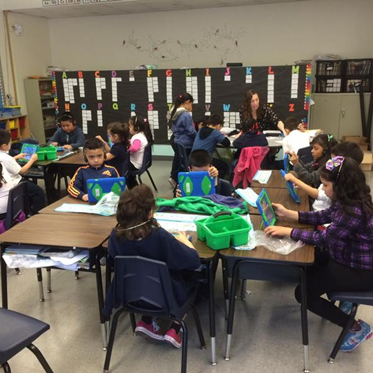
NGLC has been proud to support innovation in a mix of district and charter settings. Chávez is a planning grantee from the first cohort of Breakthrough Schools Chicago, one of six NGLC Regional Funds for Breakthrough Schools. LEAP Innovations is the local incubator supporting Chávez and other next gen schools in Chicago.
Seeing (the Evidence) Is Believing
The D.C. teachers had many excellent questions for Dassinger and a panel of Chávez teachers who met with our group. A primary question centered on how the school was able to develop such universal buy-in among veteran teachers.The answer, for Chávez, was that the next gen experience started as an after-school pilot where senior teachers were able to see, first hand, how additional time on task to practice additional reading and math skills significantly helped students succeed. Moreover, the school had the ability to run a natural experiment. One year, Chávez’ own teachers ran the blended learning labs after school and a second year, external volunteer teachers/youth workers ran the lab. The difference in results was astronomical: adding an hour a day of blended learning taught by students’ own classroom teachers, connected to core curriculum, was much more successful than having a set of volunteer instructors. For Chávez teachers, who are so committed to student success, the data convinced even the most skeptical that technology could be a powerful tool to help them do what they had been doing for years—differentiate, group, personalize, and allow students to accelerate or decelerate based on their own rates of progress. This year, in the fourth year of the pilot, the school is especially proud of a small group of eighth graders. Some are taking a virtual course in Algebra II while others travel to the state’s top high school (one of the city’s most selective) to take honors Geometry with high school freshman—a natural consequence of a system that allows students to master content at their own pace.
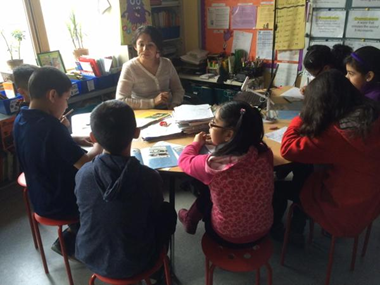
Teaching to (and Learning from) the EdTech Industry
When teachers comes to Dassinger sharing their concerns with a particular software, he doesn’t throw up his hands and complain about the ed tech industry. Instead, he calls up the software companies directly to give them feedback and then works closely with companies to come up with solutions. He also agrees to pilot new products and has developed very close relationships with the industry. When asked by the D.C. teachers what the district could better do to support his use of technology, Dassinger was fairly clear: independence and autonomy from centralized policies allows him the flexibility to purchase and tailor software based on the needs and interests of his teachers and students. Based in part on the experience of Dassinger, LEAP Innovations has developed a program to intentionally bring educators like Dassinger together with ed tech industry experts around certain topics such as improving the quality of literacy solutions.
Cesar Chávez stands out as an NGLC gem within a traditional district context. The school puts aside any doubts that personalized, blended, and competency-based instruction can occur even in the most challenging of settings.

